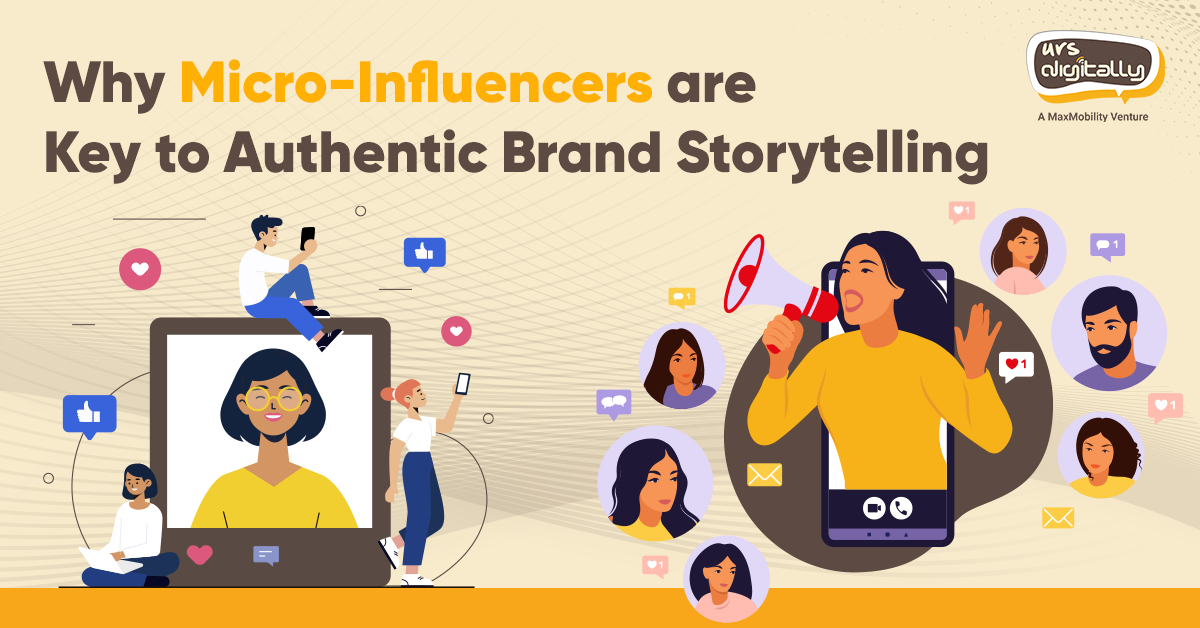In today’s hyper-connected digital world, authenticity is the gold standard for brand storytelling. Consumers are savvy, and flashy advertising campaigns often fail to resonate. Enter micro-influencers, a potent yet underutilized force in marketing. With their niche audiences and genuine voices, micro-influencers can transform how brands tell their stories.
What are Micro-Influencers?
Micro-influencers are social media personalities with follower counts typically between 1,000 and 100,000. While their audience size might seem modest compared to macro-influencers or celebrities, it’s their engagement rate and relatability that set them apart. These individuals are trusted within their niche communities—whether it’s fitness, travel, or sustainable living.
- Genuine Connections: The Power of Trust
Micro-influencers have built their reputation by being authentic and approachable. Unlike celebrities, who often feel out of reach, micro-influencers interact with their followers regularly. Their recommendations feel like advice from a trusted friend rather than a paid advertisement.
Example: Imagine a skincare brand partnering with a micro-influencer known for her honest reviews and skincare tips. Her followers trust her judgment because she’s consistently shared her struggles with acne and her genuine experiences with products.
- Hyper-Targeted Audiences: Niche is the New Broad
Micro-influencers cater to specific niches, which means their followers often share common interests. This alignment allows brands to reach hyper-targeted audiences genuinely interested in their products or services.
Why It Works:
Partnering with a micro-influencer focusing on plant-based living for a vegan food brand ensures that every follower reached will likely be within the target demographic.
- Cost-Effective Marketing: Big Results, Small Budgets
Collaborating with a micro-influencer is often more affordable than working with a macro-influencer or a celebrity. Smaller budgets can stretch further, allowing brands to partner with multiple micro-influencers across different niches.
Real-World Impact:
A boutique fashion label might spend the same amount on one celebrity post as ten micro-influencers. Still, the latter approach generates more content, higher engagement, and a broader reach.
- Humanizing Brands: Stories That Resonate
Micro-influencers are natural storytellers. They weave a brand’s message into their daily lives, making it relatable and unforced. This approach doesn’t just sell a product; it creates an emotional connection.
Case in Point:
Instead of simply promoting a fitness supplement, a micro-influencer might share their fitness journey, showcasing how the product helped them achieve their goals.
- Higher Engagement Rates: Quality Over Quantity
While macro-influencers may boast millions of followers, their engagement rates often pale compared to those of micro-influencers. A smaller, more invested audience means more likes, comments, and shares.
Data Speaks:
Studies show that micro-influencers can achieve 60% higher engagement rates than their macro counterparts. This interaction builds a stronger brand-community bond.
- Authentic Content Creation: A Win for Brands
Micro-influencers excel at creating authentic, high-quality content that feels less like advertising and more like lifestyle inspiration. This content can be repurposed by brands for their own marketing efforts.
Example:
A travel brand partnering with micro-influencers gains access to stunning, authentic travel photography and videos that resonate more deeply with audiences than polished ad campaigns.
- Long-Term Relationships: Beyond a Single Post
Unlike one-off celebrity endorsements, collaborations with micro-influencers often evolve into long-term partnerships. This creates consistency in brand messaging and builds trust over time.
Illustration:
A sustainable fashion brand that works with a micro-influencer over several months benefits from repeated exposure and an evolving narrative that deepens the connection with the audience.
- Micro-influencers as Cultural Barometers
Micro-influencers are deeply embedded in their communities and are often the first to spot emerging trends. By working with them, brands can stay ahead of the curve and adapt to shifting consumer preferences.
Trend Alert:
A food brand launching a new keto-friendly snack might collaborate with micro-influencers in the fitness community to tap into the growing interest in keto diets.
- Enhanced Brand Credibility: Trust by Association
When a micro-influencer endorses a product, it adds a layer of credibility to the brand. Their followers perceive the collaboration as a stamp of approval, especially when the influencer’s values align with the brand’s.
Proof in Action:
A sustainable beauty brand gains credibility when endorsed by a micro-influencer known for her commitment to eco-friendly living.
Final Thoughts: Micro-Influencers as Modern Storytellers
Micro-influencers are redefining the rules of brand storytelling. Their authentic voices, relatable stories, and deep connections with niche audiences make them indispensable in a world where consumers demand transparency and trust.
Micro-influencers are not just an option for brands looking to tell stories that resonate and endure; they’re the key to staying relevant. In the crowded digital landscape, it’s the small voices that can make the most significant impact.


